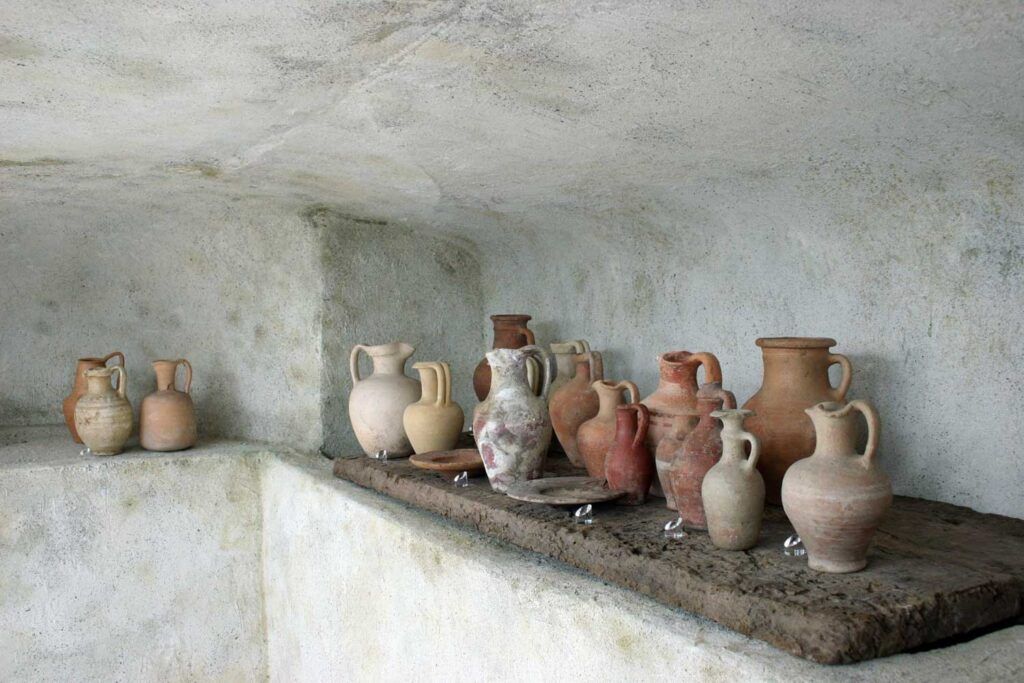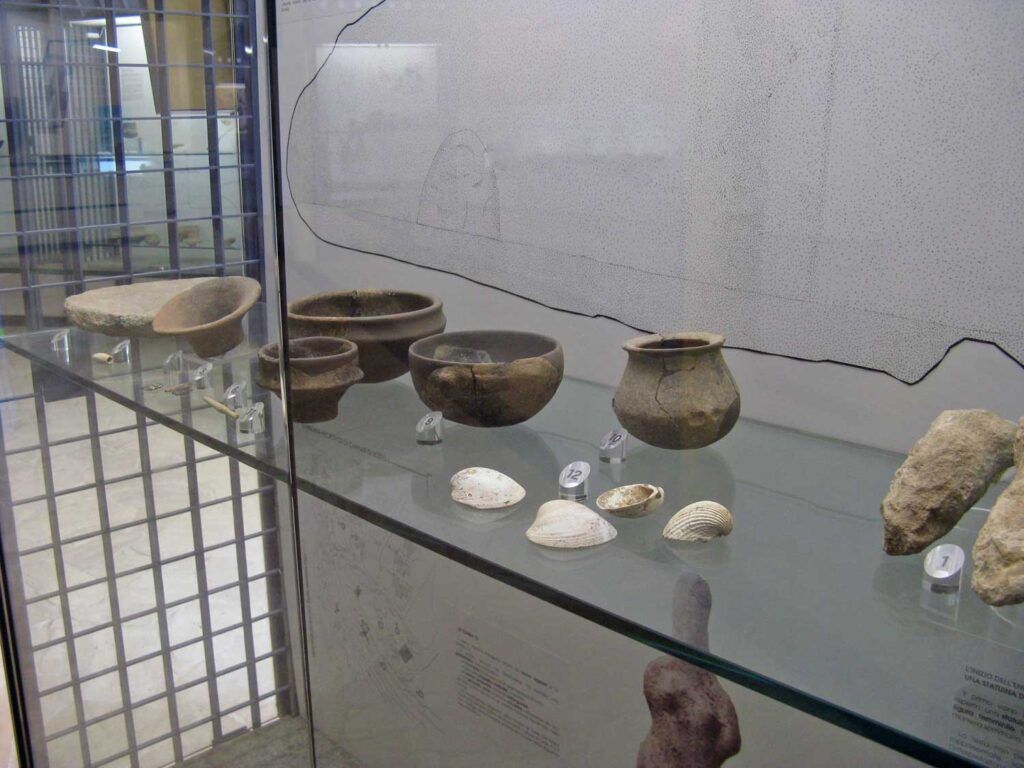Villa Sulcis Archaeological Museum
The Villa Sulcis Archaeological Museum, the centerpiece of Carbonia’s Museum System (SiMuC), is an extraordinary example of how history can be brought to life through archaeology. More than just an exhibition space, it serves as a true cultural hub encompassing all stages of cultural heritage work: from excavation and cataloging to public dissemination. For those spending their holidays in the Sulcis region, a visit to this museum offers a unique opportunity to immerse themselves in the area’s millennia-old history.
Completely renovated in 2008, the museum features an exhibition route that retraces the footprints of the ancient civilizations that once inhabited the region. Among its most significant artifacts are those from Su Carroppu, evidence of the earliest human presence in Sulcis (dating back over 11,000 years), and items from Monte Sirai, which provide a comprehensive insight into life in a Phoenician settlement. Equally captivating are materials from Nuraghe Sirai, a key resource for studying the later phases of Nuragic civilization and its integration with the Phoenicians.
Visiting the Villa Sulcis Archaeological Museum means uncovering not only Carbonia’s history but also the deep cultural roots that have shaped the region. This educational and inspiring experience is a valuable addition to any Sardinian holiday itinerary.


Recommended Route
The museum’s exhibition route is a journey through time, divided into various thematic areas.
The first room, known as the Territory Room, spans a vast area that includes sites such as Su Carroppu di Sirri, Monte Crobu, S. Giovanni Suergiu, Su Fussu Tundu di Santadi, Nuraghe Sirai, and the Bagoi Temple in Narcao. Here, visitors can explore the prehistory and protohistory of Sulcis Iglesiente, from the Neolithic period to the Bronze and Iron Ages, when the region began interacting with other cultures such as the Greeks, Etruscans, and Phoenicians.
Connecting ramps transform the archaeological sites into evocative landscapes, guiding visitors along the historic Via Sulcitana.
From there, the journey leads to the second room, dedicated to Phoenician Sulcis. This section showcases artifacts from Sulky-Sant’Antioco and Bitia, offering an in-depth look at Phoenician culture and its development in Sulcis Iglesiente.
A highlight for visitors exploring the museum during their Sulcis Iglesiente vacation is the Room Three, dedicated to Monte Sirai. This space delves into the daily life of the Phoenician-Punic settlement, presenting historical insights and everyday objects that narrate the story of a refined and complex civilization.
Services
Accessibility
The museum offers facilitated physical access for visitors with specific needs, along with a tactile display featuring Braille captions.https://www.carboniamusei.it/en/museum-archaeological-villa-sulcis_6.html
Amenities
A bookshop, educational workshops, and guided tours are available. The guided tour is included in the admission price and lasts approximately one hour.
Information
Cumulative Ticket (all SiMuC sites):
» Full price: € 10,00 (ages 13 - 65);
» Reduced price: € 9,00 (ages 6 - 12 anni; school group; senior over 65; groups of 25+; Youth Card holders);
» Free: under 6 years, disabled visitors, their companions, Superintendence members, ICOM members.
Cumulative ticket + Museum of Coal:
€ 15,00.
Cumulative tickets are valid for 60 days and included guided tours.
Website
www.carboniamusei.it
museicarbonia@gmail.com
Social media
IG: @carboniamusei
FB: carboniamusei
TW: @carboniamusei
Managing entity
Sardinia Cultural System Consortium
Entity holder
Municipality of Carbonia

